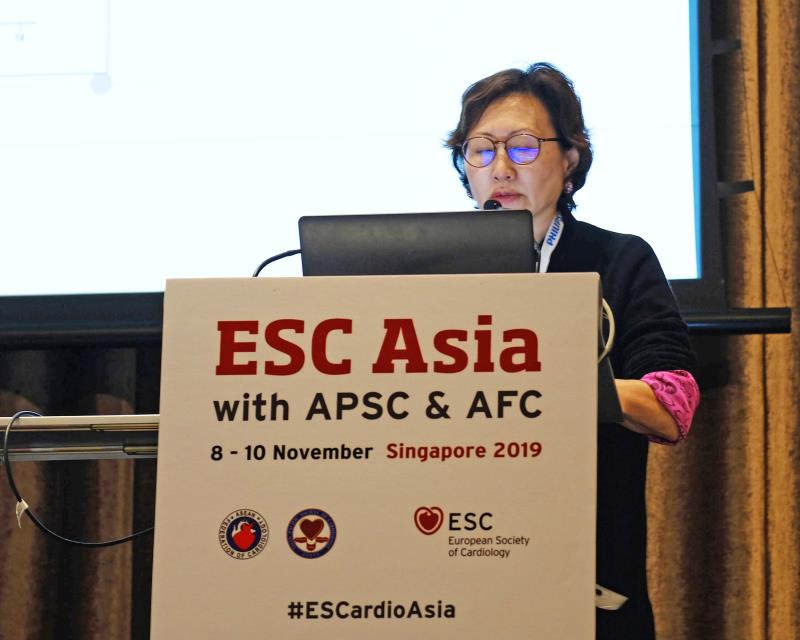 Dr Ding Zee Pin
Dr Ding Zee PinSeveral Asian studies evaluating different types of valvular heart disease (VHD) reflected poor clinical outcomes, according to a presentation at ESC Asia 2019.
In the epidemiological OxValve Survive study (n=4,009), participants with moderate-to-severe VHD were found to have a two-fold reduction in survival. “This indicates that patients with even moderate VHD does not have a benign outcome,” stressed Dr Ding Zee Pin from the National Heart Centre Singapore. “[This] warrants further research … to understand the natural history of VHD and to identify those with progressive disease and when to intervene.”
A Japanese study on 182 individuals with primary moderate mitral regurgitation (MR) showed that those with moderate MR had a worse prognosis than patients who had mild or no MR (p<0.0001). “The predictor of poor outcome is paroxysmal atrial fibrillation,” said Ding. [ESC 2019, abstract P924]
Similar results were reflected in a collaborative study between the National Heart Centre Singapore and the University of London which evaluated moderate aortic stenosis (n=522; mean age 71 years, 54 percent male). Participants with more advanced disease had a poorer outcome than those without any extravalvular involvement. [ESC 2019, abstract P5582]
Among patients with infective endocarditis, mortality continues to rise despite contemporary management. “A review of recent literature … from Asia continuously shows that … the risk is higher among patients with nosocomial infection, those with large [medically treated] vegetations, and those who have undergone haemodialysis,” said Ding.
Does size matter?
A comparison of aortic annulus dimensions between Japanese and European participants showed the former to have a smaller and more eccentric aortic annulus than the latter. [AsiaIntervention 2016;2:49-56] In a Singaporean cohort, the iliofemoral vessel diameter is apparently smaller. [Int J Cardiol 2013;167:1373-1379] “[These findings suggest that] the smaller Asian size poses some challenge to [TAVI*],” said Ding.
In a Japanese TAVI registry comparing participants with and without a small annulus, those with a small annulus had a smaller indexed effective orifice area (1.10 vs 1.16 cm2), a higher mean pressure gradient (10.0 vs 8.5 mm Hg), and a lower frequency of moderate paravalvular leak (17.3 percent vs 24.4 percent; p<0.001 for all), noted Ding. Nonetheless, both arms had comparable 30-day mortality and stroke rates, suggesting that a small annulus did not influence short-term clinical outcomes. [ESC 2019; abstract P1788]
Help at your fingertips
A handheld echo scan may provide an opportunity for VHD screening and detection. In a rheumatic heart disease (RHD) screening in Borneo, Malaysia wherein 211 schoolchildren (mean age 10 years) participated, the device identified borderline RHD in 36 percent of the participants. “[This is] a significantly high incidence of borderline RHD among this cohort, suggesting that RHD continues to be prevalent in East Malaysia,” said Ding.
Despite the favourable short- and midterm mortality rates (1–3 percent [30 days] and 8–10 percent [1 year], respectively) observed in other larger Asian TAVI registries, [Circulation 2017;135:2013-2024; JACC Cardiovasc Interv 2016;9:926-933; Korean Circ J 2018;48:382-394] longer term outcomes from these registries are warranted to elucidate the long-term survival outcomes of VHD in Asia, said Ding.